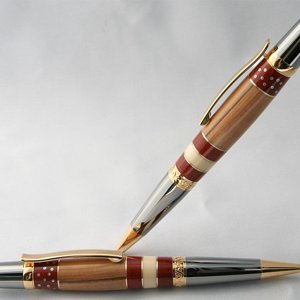After turning the blanks, the aluminum separator's between the segments, are bright & shining; like I want.
However, when sanding (the blanks), to prep for the finish, the aluminum goes dull, like pewter, and I can't get it "bright" again, even sanding / polishing to 12K with the Micro Mesh.
What's causing this? Any help will be greatly appreciated.
However, when sanding (the blanks), to prep for the finish, the aluminum goes dull, like pewter, and I can't get it "bright" again, even sanding / polishing to 12K with the Micro Mesh.
What's causing this? Any help will be greatly appreciated.

